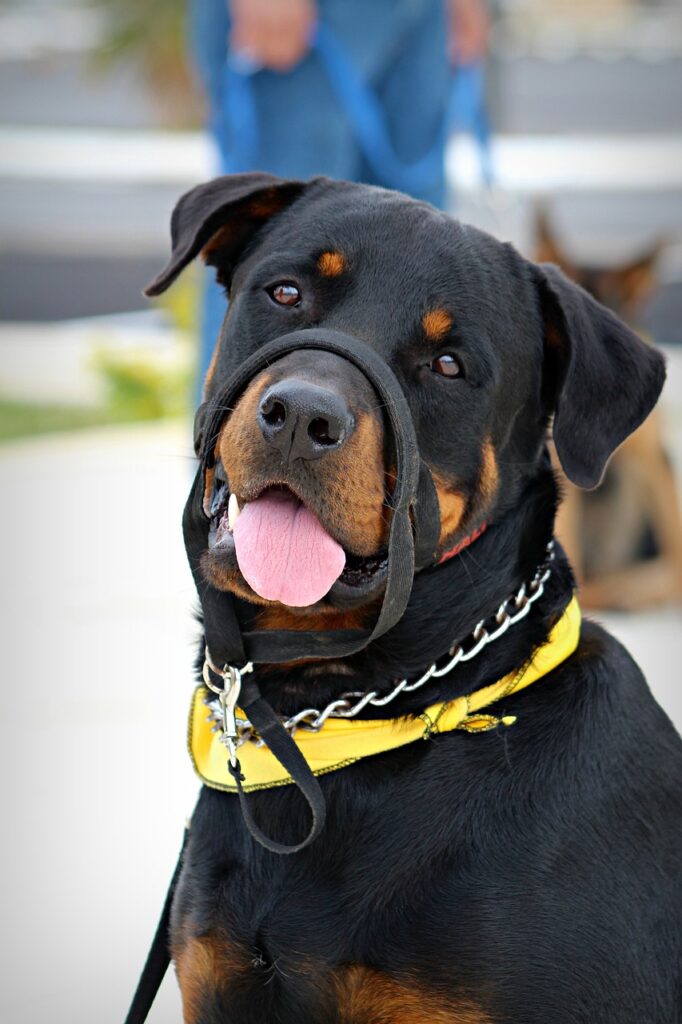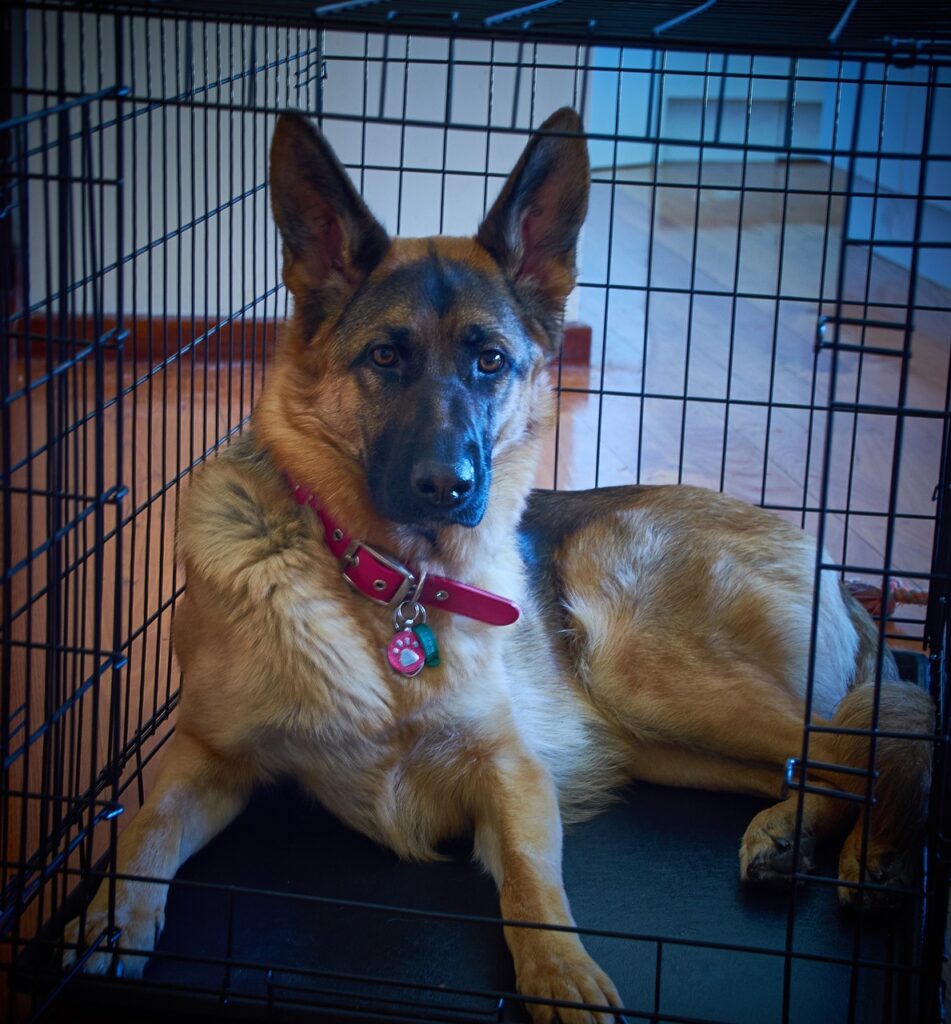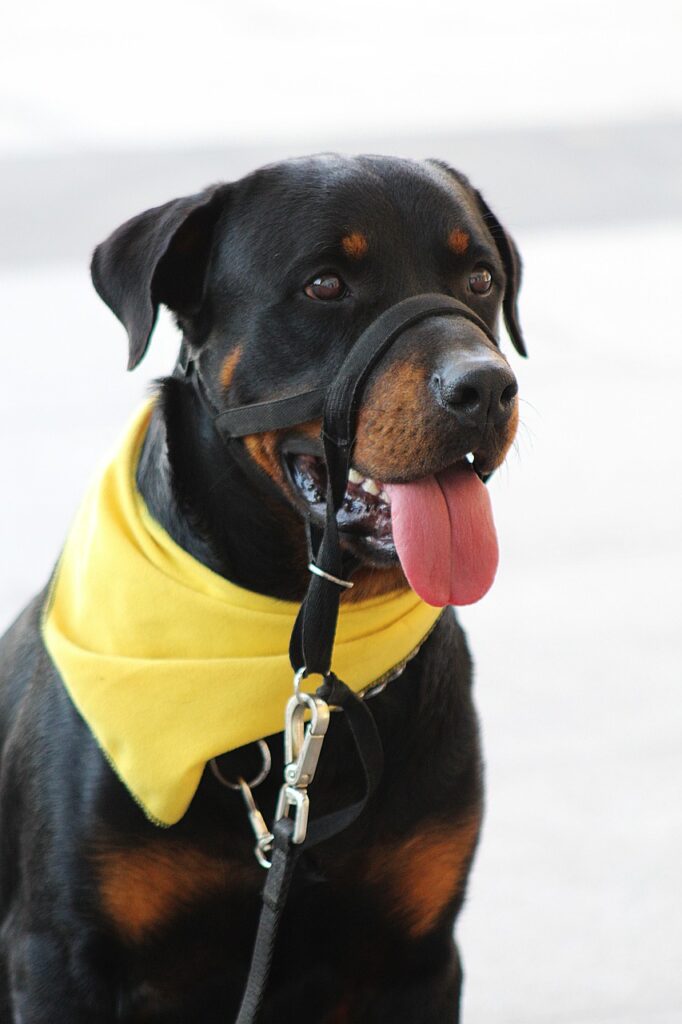
Are you struggling to get your furry friend to listen to your commands? If so, you’re not alone! Many pet owners find themselves wondering how they can improve their dog’s obedience. Whether it’s getting them to sit, stay, or stop jumping on guests, training your dog can sometimes feel like a daunting task. However, with some patience and consistent effort, you can teach your pup to be more obedient and well-behaved. In this article, we will explore some practical tips and techniques to help you improve your dog’s obedience and strengthen your bond with them. So, let’s get started on this exciting journey towards a more well-behaved and obedient furry companion!

Setting clear expectations
When it comes to improving your dog’s obedience, setting clear expectations is crucial. By establishing consistent rules, using clear and concise commands, setting boundaries, and avoiding mixed signals, you can provide your dog with a solid foundation for obedience training.
Establishing consistent rules
Consistency is key when it comes to training your dog. By setting and following consistent rules, your dog will quickly learn what behaviors are expected and what is not acceptable. This means everyone in the household should be on the same page and enforce the same rules. When everyone is consistent, it will be easier for your dog to understand and comply with those rules.
Using clear and concise commands
Using clear and concise commands is essential for effective obedience training. Dogs don’t understand long sentences or complex language. Keep your commands short and easy to understand. For example, instead of saying, “Please sit down now, my precious pup,” simply say, “Sit.” Consistency in your command words will help your dog associate the command with the desired behavior.
Setting boundaries
Setting boundaries is another important aspect of improving your dog’s obedience. Decide on the areas of your home where your dog is allowed and where they should not go. Use physical barriers, such as baby gates or closed doors, to clearly define those boundaries. By consistently reinforcing these boundaries, your dog will learn to respect them and understand what areas are off-limits.
Avoiding mixed signals
To avoid confusion and create a clear communication system, it’s important to avoid mixed signals when training your dog. Dogs are intuitive and can pick up on subtle cues and body language. Ensure that your words, actions, and body language are consistent with the message you want to convey. Mixed signals can cause frustration and hinder your dog’s progress in obedience training.
Positive reinforcement training
Positive reinforcement training is a highly effective method for improving your dog’s obedience. This training technique relies on rewards, such as treats and praise, to encourage desired behaviors and discourage unwanted behaviors.
Reward-based training
Reward-based training involves providing positive reinforcements, such as treats, praise, or playtime, when your dog exhibits the desired behavior. When your dog follows a command or displays good behavior, reward them immediately. This positive association will reinforce the behavior and motivate your dog to repeat it.
Using treats and praise
Treats and praise are powerful tools in positive reinforcement training. Use small, tasty treats that your dog loves and reserve them specifically for training sessions. Praise your dog enthusiastically when they respond correctly to a command or exhibit good behavior. By pairing treats and praise with obedience, your dog will be more motivated to comply with your commands.
Clicker training
Clicker training is a popular form of positive reinforcement training that utilizes a handheld clicker to mark desired behaviors. The sound of the clicker is paired with rewards, so your dog learns to associate the click with positive reinforcement. This technique allows for precise timing and helps your dog understand what specific behavior is being rewarded.
Consistency and timing
Consistency and timing are essential in positive reinforcement training. Provide rewards immediately after your dog performs the desired behavior so they can associate the reward with the action. Consistency ensures that your dog understands what behavior is being reinforced, and timing reinforces the correct behavior at the right moment.
Socialization and exposure
Socialization and exposure to different environments, dogs, people, and stimuli are crucial for a well-rounded and obedient dog. Socializing your dog from an early age will help them feel more comfortable in various situations and prevent fear or aggression issues.
Introducing your dog to different environments
Expose your dog to different environments gradually. Start with calm and controlled environments, such as your home or backyard, and gradually work your way up to more challenging situations, such as parks or busy streets. This gradual exposure will help your dog build confidence and adapt to new surroundings.
Socializing with other dogs and people
Socializing your dog with other dogs and people is essential for their overall well-being and obedience. Arrange playdates with other friendly and well-behaved dogs to provide positive social interactions. Encourage your dog to meet new people, ensuring these encounters are safe and positive. By exposing your dog to different dogs and people, they will learn appropriate behavior and develop positive social skills.
Exposing them to various stimuli
Expose your dog to various stimuli to minimize fear and anxiety in different situations. This includes exposing them to different sounds, such as loud noises or fireworks, various textures, surfaces, and objects. Gradually desensitize your dog to these stimuli by starting with low-intensity exposure and rewarding calm behavior. This exposure will help your dog become more confident and less reactive to new and potentially overwhelming situations.
Sensitization and desensitization techniques
Sensitization and desensitization techniques can also help improve your dog’s obedience. This involves exposing your dog to things that may trigger fear or anxiety in a controlled and positive manner. By gradually increasing exposure and rewarding calm behavior, your dog can learn to overcome their fears and react more calmly in those situations.
Consistency and routine
Consistency and routine play a significant role in improving your dog’s obedience. By establishing a daily routine, maintaining consistent rules and expectations, providing regular exercise and mental stimulation, and maintaining a calm and assertive energy, you can create a structured environment that promotes obedience.
Establishing a daily routine
Dogs thrive on routine. Establishing a daily routine for feeding, exercise, training sessions, and relaxation time provides structure and predictability for your dog. Dogs are more likely to exhibit obedient behaviors when they have a consistent schedule and know what to expect.
Consistent rules and expectations
Consistency in the rules and expectations you have for your dog is crucial for their understanding of what behaviors are acceptable. Enforce the same rules consistently and ensure everyone in the household follows them. This consistency will eliminate confusion and help your dog grasp what is expected of them.
Regular exercise and mental stimulation
A tired dog is a well-behaved dog. Regular exercise and mental stimulation are essential for maintaining your dog’s physical and mental well-being. Engage in daily exercise sessions that suit your dog’s breed and energy level, whether it’s a walk, playtime, or interactive toys. Mental stimulation, such as puzzle toys, training sessions, or scent games, will also keep your dog engaged and prevent boredom, which can lead to unwanted behaviors.
Maintaining a calm and assertive energy
Dogs are highly attuned to their owner’s energy. Maintaining a calm and assertive energy during training sessions and throughout your daily interactions with your dog will promote obedience. Dogs respond best to confident and consistent leadership. Avoid being aggressive or overly dominant, as this can create fear or anxiety in your dog. Instead, be calm, assertive, and establish yourself as a trustworthy leader.

Professional training
Sometimes, seeking professional training assistance can significantly improve your dog’s obedience. A reputable dog trainer can provide guidance, expertise, and personalized training plans to address specific obedience issues.
Finding a reputable dog trainer
Finding a reputable dog trainer is essential. Look for trainers who have experience, positive reviews, and a clear training philosophy aligning with your values. Ask for recommendations from friends, family, or your veterinarian. A good trainer will have credentials and certifications, such as CPDT-KA or CCPDT, that demonstrate their knowledge and expertise.
Different training methods
There are various training methods employed by dog trainers, including positive reinforcement, balanced training, or clicker training. Research and choose a method that aligns with your training goals, dog’s temperament, and your personal beliefs. A good trainer will be able to assess your dog and tailor their methods to suit your dog’s needs.
Training classes or private sessions
Decide whether you prefer group training classes or private sessions, depending on your dog’s obedience level, socialization needs, and your personal preferences. Group classes provide opportunities for socialization and distractions, while private sessions focus more on individual attention. Choose the setting that best suits your dog’s training needs.
Follow-up and practice
Dog training is an ongoing process that requires consistency and practice. A good trainer will provide follow-up support and guidance to ensure you continue making progress with your dog’s obedience. Practice training exercises regularly at home to reinforce what you’ve learned during training sessions. Regular practice is the key to maintaining and improving your dog’s obedience skills.
Correcting unwanted behavior
Correcting unwanted behaviors is an integral part of improving your dog’s obedience. By identifying triggers and patterns, understanding body language, redirecting and replacing behaviors, and utilizing positive reinforcement, you can address and modify undesirable behaviors effectively.
Identifying triggers and patterns
To correct unwanted behavior, it’s crucial to identify the triggers and patterns that lead to those behaviors. Observe your dog closely and take note of situations or objects that provoke undesirable behavior. Whether it’s jumping, barking, or pulling on the leash, understanding the triggers will help you address and modify those behaviors effectively.
Understanding body language
Dogs communicate through body language, and understanding their signals is essential for correcting unwanted behaviors. Learn to recognize signs of anxiety, fear, or aggression, such as tense body posture, raised hackles, lip licking, or growling. By understanding your dog’s body language, you can intervene before undesirable behaviors escalate and redirect their attention appropriately.
Redirecting and replacing behaviors
When you notice your dog engaging in unwanted behavior, instead of punishing or reprimanding them, redirect their attention to a more desirable behavior. For example, if your dog jumps on visitors, teach them an alternative behavior like sitting or staying calmly. Redirecting their focus positively reinforces the desired behavior and helps eliminate the unwanted one.
Consistency and positive reinforcement
Consistency is crucial when correcting unwanted behavior. Ensure everyone in the household responds to the behavior in the same way to avoid confusion. Instead of focusing on punishment, use positive reinforcement to reward good behavior and ignore or redirect unwanted behavior. Consistency and positive reinforcement help your dog understand which behaviors are appropriate and which ones are not.

Building a strong bond
Building a strong bond with your dog is a fundamental aspect of improving their obedience. By establishing trust and respect, effective communication, quality time, and gentle touch, you can create a deep connection that enhances your dog’s willingness to obey.
Establishing trust and respect
Trust and respect are the foundation of any strong relationship, including the one between you and your dog. Build trust by consistently meeting your dog’s needs, being reliable, and providing a safe and secure environment. Respect your dog’s boundaries, emotions, and physical space. Establishing trust and respect will create a strong bond and encourage your dog to listen and obey willingly.
Effective communication
Effective communication is key to improving your dog’s obedience. Dogs don’t understand human language, so it’s essential to communicate through consistent commands, body language, and tone of voice. Be clear and concise in your commands and use consistent hand signals or cues to reinforce your verbal commands. Your dog will learn to recognize and respond to your communication cues effectively.
Quality time and attention
Spending quality time with your dog is vital for building a strong bond and improving obedience. Engage in activities that you both enjoy, such as walks, playtime, or training sessions. Use these opportunities to provide mental stimulation, reinforce obedience commands, and strengthen your dog’s trust in you as their leader. Regular, focused attention shows your dog that they are valued and loved.
Gentle touch and physical contact
Affectionate physical contact, such as gentle touch, grooming, and cuddling, can strengthen the bond between you and your dog. Touch is a powerful way to communicate love and reassurance. However, always respect your dog’s individual preferences and boundaries when it comes to physical contact. Some dogs may not enjoy certain types of touch, so pay attention to their body language to ensure they are comfortable.
Patience and consistency
Improving your dog’s obedience requires patience and consistency. It’s important to understand the learning process, avoid frustration and punishment, repeat and reinforce commands, and set realistic goals for both you and your dog.
Understanding the learning process
Dogs learn at their own pace, and it’s important to be patient and understanding during the learning process. Some dogs may pick up new commands quickly, while others may take longer. Be patient and offer encouragement and positive reinforcement when your dog makes progress. Understanding that learning is a gradual process will help you set realistic expectations and avoid unnecessary frustration.
Avoiding frustration and punishment
It’s essential to avoid frustration and punishment when training your dog. Punishment can lead to fear, anxiety, and aggression. Instead of focusing on what your dog does wrong, redirect their attention to the desired behavior and reward them when they get it right. Maintain a calm and patient attitude during training sessions and always end on a positive note.
Repeating and reinforcing commands
Repetition is a key component of learning. Repeat commands consistently and use positive reinforcement each time your dog responds correctly. This repetition helps your dog understand and retain the desired behavior. Ensure that your commands are clear and concise, so your dog knows what is expected of them.
Setting realistic goals
Setting realistic goals for both you and your dog is important for maintaining motivation and progress in obedience training. Break down tasks into smaller, achievable steps that build upon each other. Celebrate small victories along the way, and remember that each dog learns at their own pace. By setting realistic goals, you’ll experience success and keep your dog motivated to continue improving their obedience.
Health and well-being
The overall health and well-being of your dog contribute to their ability to be obedient. By prioritizing regular veterinary check-ups, providing proper nutrition and exercise, addressing any medical or behavioral issues, and ensuring a comfortable living environment, you can support your dog’s obedience and overall happiness.
Regular veterinary check-ups
Regular veterinary check-ups are crucial for your dog’s overall health and well-being. Schedule routine vet visits to ensure vaccinations are up to date, to address any health concerns, and to receive expert advice on nutrition, exercise, and behavior. A healthy dog is more likely to have the energy and focus needed for obedience training.
Proper nutrition and exercise
Proper nutrition and regular exercise are vital for a well-behaved dog. Provide a balanced diet that meets your dog’s specific nutritional needs. Consult with your veterinarian to determine the appropriate amount and type of food for your dog’s age, breed, and size. Regular exercise, such as walks, runs, or play sessions, helps burn excess energy and keeps your dog physically and mentally stimulated.
Addressing medical or behavioral issues
Addressing any medical or behavioral issues promptly is essential for improving your dog’s obedience. If you notice any changes in your dog’s behavior or health, consult with your veterinarian to rule out any underlying medical conditions. Behavioral issues, such as anxiety or aggression, can also impact your dog’s obedience. Seek professional guidance or enlist the help of a qualified dog behaviorist to address and manage these issues effectively.
Ensuring a comfortable living environment
Creating a comfortable and safe living environment is essential for your dog’s well-being and obedience. Provide a designated space for your dog to rest, a cozy bed, and access to fresh water at all times. Ensure your home is secure and free from hazards that could cause injury. By creating a comfortable living environment, you provide your dog with the stability needed to focus on obedience training.
Continuous learning and enrichment
Obedience training is an ongoing process that extends beyond basic commands. By participating in advanced training, teaching new tricks and commands, providing mental stimulation, and exploring different activities, you can continuously engage your dog’s mind and prevent boredom or regression in their obedience skills.
Participating in advanced training
Participating in advanced training classes or activities can further improve your dog’s obedience skills. These classes build upon basic commands and introduce more complex behaviors or tasks. Advanced training challenges your dog’s abilities, strengthens their obedience skills, and deepens the bond between you and your dog.
Teaching new tricks and commands
Teaching new tricks and commands is a fun way to stimulate your dog mentally and reinforce their obedience. Teach your dog a variety of tricks, such as roll over, play dead, or give paw, to keep their minds engaged and provide mental enrichment. Learning new commands also strengthens their obedience foundation and increases their overall responsiveness to your instructions.
Providing mental stimulation
Mental stimulation is vital for your dog’s well-being and obedience. Engage their minds through puzzle toys, interactive games, or scent work. Hide treats around the house for them to find or introduce them to new toys or challenges that require problem-solving. Keep their minds active to prevent boredom, which can lead to destructive behaviors or disobedience.
Exploring different activities
Exploring different activities with your dog can enhance their obedience skills and overall happiness. This could include agility classes, obedience trials, or canine sports such as dock diving or flyball. These activities provide physical exercise, mental stimulation, and opportunities for you and your dog to bond and work together towards a shared goal.
In conclusion, improving your dog’s obedience requires setting clear expectations, employing positive reinforcement training techniques, providing socialization and exposure, establishing consistency and routine, considering professional training when needed, correcting unwanted behaviors effectively, building a strong bond, being patient and consistent, prioritizing health and well-being, and continuously learning and enriching your dog’s life. By implementing these strategies and investing time and effort into your dog’s obedience training, you will not only have a well-behaved companion but also a stronger and more fulfilling relationship with your furry friend. So, get started on your dog’s obedience journey today and enjoy the rewards that come with a dog who listens and obeys.

